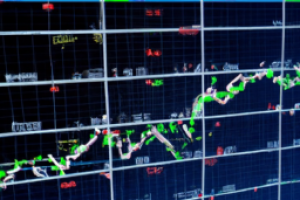Technical Analysis
Welcome to the Technical Analysis section of Valifind.com, your go-to source for insights and strategies to help you navigate the financial markets with precision and confidence. Is a crucial tool for traders and investors looking to make data-driven decisions. At Valifind.com, we provide in-depth analysis, charts, and expert commentary to help you understand market trends, price movements, and potential trading opportunities. Whether you’re a beginner or a seasoned trader, our section is designed to enhance your trading skills and maximize your investment returns. Understanding – is essential for anyone serious about trading or investing. By analyzing price patterns, volume, and other market data, technical analysis helps predict future market movements and identify potential entry and exit points. Our team of experienced analysts at Valifind.com offers a wealth of knowledge to help you grasp the fundamentals and advanced techniques of technical analysis. We focus on practical, actionable insights that you can apply directly to your trading strategies, ensuring you stay ahead of market trends and make informed decisions.
Understanding and Trading with Advanced Candlestick Patterns
Advanced Candlestick Patterns Candlestick patterns are a fundamental part of technical analysis in trading. They provide visual insights into the market sentiment and can help traders make informed decisions. While there are many simple candlestick patterns, this article will delve into the advanced patterns that can provide more nuanced information about the market. Three-Line Strike The three-li...[Read More]
Understanding and Applying the Bollinger Band Squeeze Technique
Bollinger Band Squeeze Technique The Bollinger Band squeeze technique is a popular and effective strategy used by traders to identify potential breakout points in the market. This technique is based on the Bollinger Bands, a technical analysis tool developed by John Bollinger in the 1980s. The Bollinger Band squeeze technique is used to determine periods of low volatility, which are often followed...[Read More]
A Comprehensive Guide to Understanding Market Cycles
Understanding Market Cycles The financial markets are often compared to a roller coaster due to their cyclical nature. Like a roller coaster, markets experience highs and lows, periods of growth and decline. Understanding these market cycles is crucial for investors to make informed decisions and manage their investments effectively. This article aims to provide a comprehensive understanding of ma...[Read More]
Mastering Trade Signals With the MACD Indicator
Using MACD for Trade Signals Trading in the financial markets involves a careful analysis of various indicators to make informed decisions. One such popular tool is the Moving Average Convergence Divergence (MACD). This article will delve into the use of MACD for trade signals. Understanding MACD Before delving into how to use MACD for trade signals, it’s crucial to understand what it is. Th...[Read More]
Mastering the Art of Trading with Harmonic Patterns
Trading with Harmonic Patterns Introduction to Harmonic Patterns Harmonic trading is a methodology that utilizes the recognition of specific price patterns and the alignment of exact Fibonacci ratios to determine highly probable reversal points in the financial markets. This methodology assumes that trading patterns or cycles, like many patterns and cycles in life, repeat themselves. The primary h...[Read More]
A Comprehensive Guide to Identifying Key Support and Resistance Zones
Introduction The financial market is a complex environment where different factors interplay to determine the direction of asset prices. Among these factors, support and resistance levels play a significant role in the technical analysis of market trends. They are crucial in identifying potential entry and exit points for trades, predicting future price movements, and setting stop-loss and take-pr...[Read More]
A Comprehensive Guide to Identifying Common Chart Patterns
Identifying Common Chart Patterns Trading and investing in the financial markets involve a lot of analysis and interpretation of various data. One of the most significant aspects of this analysis is identifying common chart patterns. These patterns can provide valuable insights into potential future price movements. What are Chart Patterns? Chart patterns are formations that appear on the price ch...[Read More]
Mastering the Art of Identifying Reliable Support Levels in Trading
Finding Reliable Support Levels Support levels are a key concept in technical analysis and trading. They represent a price level or area on the chart below the current market price where buying is strong enough to overcome selling pressure. As a result, a decline in price is halted and prices are turned back up again. Finding reliable support levels can be crucial for successful trading. Understan...[Read More]
Mastering the Art of Drawing Accurate Trend Lines in Trading
Drawing Accurate Trend Lines Trading and investing in the financial markets require a deep understanding of trends. One of the most important tools used by traders and investors to understand these trends is the trend line. In this article, we will explore the process of drawing accurate trend lines, which is crucial for making informed and profitable trading decisions. What are Trend Lines? Trend...[Read More]
Understanding the Role of Sentiment Analysis in Technical Trading
Introduction to Sentiment Analysis in Technical Trading Trading in the financial markets involves making decisions based on a variety of factors. Traditionally, these decisions were based on fundamental and technical analysis. However, with the advent of big data and machine learning, sentiment analysis has emerged as a new tool for traders. Sentiment analysis, in the context of trading, involves ...[Read More]
Mastering Pivot Points for Effective Day Trading Strategies
Introduction to Pivot Points Pivot points are a crucial tool in technical analysis, used by traders to determine potential support and resistance levels. These are points where the price of a security could potentially change direction. In day trading, pivot points are extensively used to identify entry and exit points in the market. This article will guide you on how to use pivot points effective...[Read More]
Mastering Algorithmic Trading with Technical Indicators
Introduction to Algorithmic Trading Algorithmic trading, also known as algo-trading or black-box trading, involves the use of complex algorithms to automate the trading process. This form of trading is highly dependent on mathematical models and formulas to make high-speed decisions and transactions in the financial markets. The primary goal of algorithmic trading is to maximize profits while mini...[Read More]



